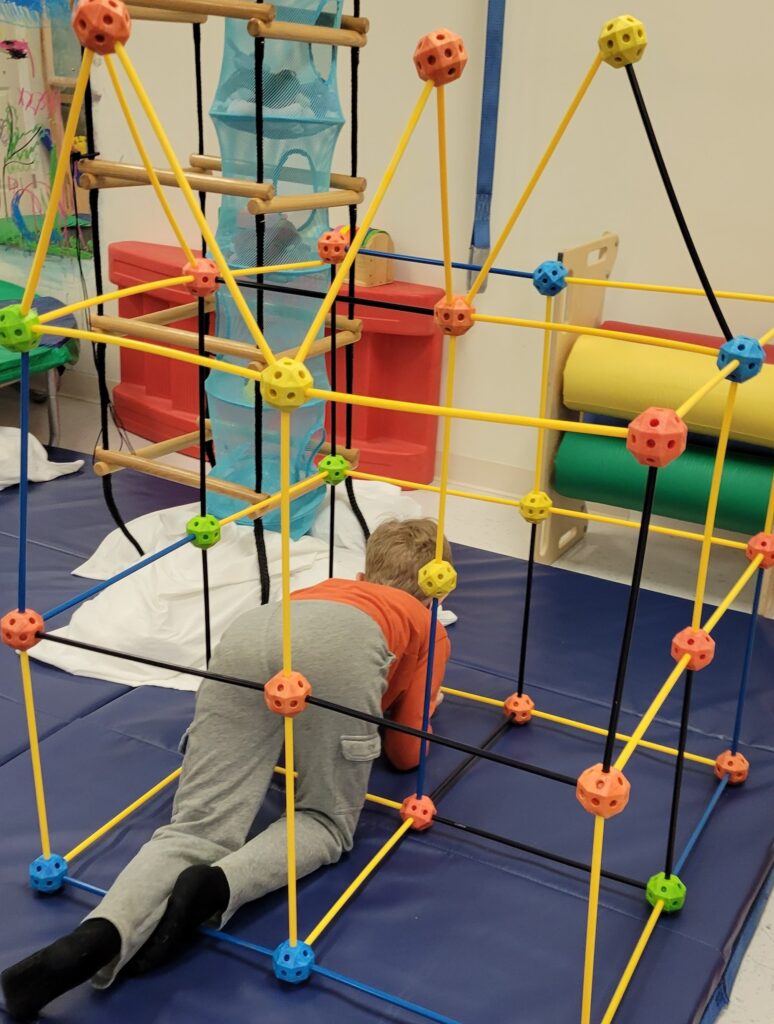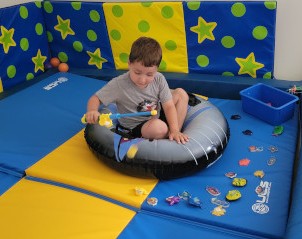
🧠 Understanding Sensory Processing and Sensory Integration
By Antonia Llull, MOT, OTR/L │ Founder and Clinical and Program Director – MPOWERME
Section: Sensory Processing & Regulation
Every child takes in the world through their senses. Whether it’s the bright light of a classroom, the tightness of a waistband, the hum of a cafeteria, the feel of a new shirt, the sound of a busy classroom or the simple act of swinging at the playground, sensory input is constant.
For some children, their brains process this input in a way that supports curiosity, comfort, and learning. For others—especially those with sensory processing challenges—the input may be confusing, overwhelming, or barely noticed at all.
At MPOWERME, we help children and families make sense of these differences. Our team uses a play-based, evidence-informed approach to support regulation, build developmental skills, and reduce frustration for children who experience the world differently.
🧠 What Is Sensory Integration?
Sensory integration is the brain’s ability to take in information from the body and environment, organize it, and use it to respond in purposeful, functional ways. This concept — originally defined by occupational therapist and neuroscientist Dr. A. Jean Ayres — explains why a child might melt down after a noisy birthday party, crash into furniture to feel “just right,” or avoid clothing with seams or tags.
The sensory systems involved include more than just the five you learned in school. We now understand eight sensory systems:
- Tactile (Touch): texture, pressure, temperature, pain
- Auditory (Hearing): processing of sounds
- Visual (Sight): interpreting what we see
- Olfactory (Smell): identifying and responding to odors
- Gustatory (Taste): interpreting flavors
- Vestibular (Balance & Motion): detecting head movement and orientation
- Proprioception (Body Awareness): sensing where our limbs are through muscle and joint feedback
- Interoception (Internal Awareness): recognizing hunger, thirst, emotions, and internal cues
Together, these systems influence how we focus, move, socialize, learn, rest, and relate to our environments.
⚖️ What Is Modulation and Why Does It Matter?
One of the most essential sensory functions is modulation — the ability to organize sensory input in a way that keeps us in a balanced state of alertness and readiness. We call this the “just right” zone.
When a child is seeking input, they may seem hyperactive or impulsive. When over-alert, they may appear overwhelmed or emotionally reactive. When under-aroused, they may appear inattentive, low-energy, and unmotivated. A shutdown state—often mistaken for fatigue—is actually high internal stress.
Skilled occupational therapists are trained to identify these nuanced states and help children reach a level of regulation that supports learning, participation, and comfort in their body.
🔄 What Sensory Processing Differences Can Look Like
Children with sensory processing challenges may:
- Avoid messy play, certain clothing, or grooming routines
- React strongly to sound, light, or touch
- Constantly seek movement, pressure, or tactile input
- Struggle to sit still, fall asleep, or transition between tasks
- Appear “checked out” or overly sensitive in busy environments
- Avoid hygiene, grooming, or mealtime activities
- Have difficulty with transitions or routine changes
- Display strong reactions to textures, lights, or sounds
- Seek intense movement like crashing, spinning, or chewing
- Avoid swings, messy play, or clothing changes
- Seem “zoned out,” overly cautious, or unusually fearless
- Display big emotional responses that seem out of proportion
These behaviors are not misbehavior. They are communication — your child’s way of saying, “Something doesn’t feel right.”
When children can’t process input efficiently, they use the behaviors available to them to feel safer, calmer, or more alert.
🎯 How We Help at MPOWERME
At MPOWERME, sensory integrative approaches are a cornerstone of our practice. We help children gain more consistent, functional responses to sensory input so they can:
- Regulate their energy and emotions
- Build postural control and muscle tone
- Improve motor coordination and planning (praxis)
- Reduce how often they become overwhelmed by everyday sensory input
- Strengthen confidence and participation in daily life
Through play-based, individualized activities, we provide children the input they need in a way that feels purposeful and fun. Sessions may include:
- Swinging, climbing, jumping, and other “heavy work” activities
- Tactile experiences like messy play, fidgets, or resistive materials
- Calming tools like weighted items, proprioceptive pressure, or breathwork
- Structured routines that build tolerance and trust
We collaborate closely with caregivers, educators, and other providers to carry these supports into the child’s daily routines — because real success shows up not just in therapy, but at home, at school, and in the community.
🌱 Why Sensory Integration Supports So Much More
The vestibular, proprioceptive, and tactile systems form the foundation for nearly everything else — speech and language development, executive function, social skills, feeding, and sleep. When sensory regulation improves, so does a child’s ability to connect, communicate, and learn.
We often see improvements in:
- Classroom focus and participation
- Mealtime flexibility and food tolerance
- Emotional resilience and coping skills
- Independence in dressing, hygiene, and transitions
- Expressive communication and interaction
In future articles, we’ll explore how our SLPs also incorporate sensory-informed strategies to support speech and language development, because sensory and communication systems are deeply connected.
💬 From Our Team to Yours
At MPOWERME, we believe that sensory processing is not about fixing a child — it’s about understanding them. By tuning in to how your child experiences the world, you can create more peaceful routines, deeper connection, and a stronger foundation for learning.
“We don’t treat symptoms in isolation. We help children build confidence, develop core skills, and discover what it feels like to thrive in their bodies.”
🔜 What’s Next in This Series
In future articles, we’ll explore topics like:
- Tactile Defensiveness — how to support a child who avoids touch or textures
- Vestibular-Proprioceptive Integration and its link to motor planning
- Sensory Modulation Strategies for home and school
- How to Create a Regulation Toolkit
- Supporting Interoception and Emotional Awareness
Whether you’re just beginning to explore sensory processing or deepening what you already know, this series is here to guide and support you. Let’s keep learning together — one article, one insight, and one connection at a time.



